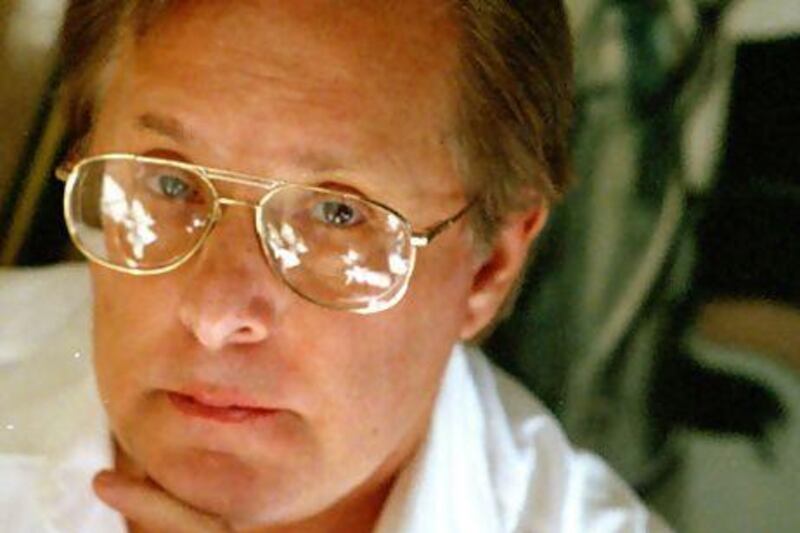15:46:35Hard to believe today, but The French Connection went unmade for so long that its director, William Friedkin, went on unemployment benefit. “I was out of work for two years before anyone showed any interest in that picture,” said Friedkin, who eventually won Oscars for The French Connection (1971) and The Exorcist (1975).
Both those films sealed Friedkin’s reputation as one of Hollywood’s most bankable directors – that is, until a huge failure brought him back to Earth.
Sorcerer, the 1977 film that Friedkin, 77, considers his finest, was a monumental flop. The tale of four men driving a cargo of explosives on mountain roads in Latin America took a huge loss. So did Friedkin’s reputation.
“Those whom the gods would destroy, they first make successful in show business,” he remembers a studio executive warning him.
Over decades, Sorcerer won over critics, but was never shown. Now, as Friedkin publishes a memoir, The Friedkin Connection, the 35mm film has been resurrected. A digital version will premiere at the Venice Film Festival on August 29, Friedkin’s 77th birthday. There is even talk of it showing at a festival in the Gulf after that.
Sorcerer retells the story of Wages of Fear, a novel by Georges Arnaud that was first filmed by Henri-Georges Clouzot in 1953.
“I never thought of it as a remake, and it never was one,” Friedkin recently told a sold-out audience in New York, at Sorcerer’s first public screening there since its initial release. “The idea is that four strangers who don’t like each other very much have to cooperate in order to survive, or they will explode, they will blow up.
“That was a metaphor for the world, and still is. The world is about strangers from different countries, who really don’t like each other, but if they don’t cooperate, it’ll blow up the world,” he said.
“One of my themes is that there is good and evil in everyone. I was not out to make these guys heroes. I really don’t believe in heroes. The best of people have a dark side and it’s a constant struggle for the better side to survive and to thrive,” he explained.
Human imperfection is at the core of Friedkin’s movies. His first film, The People vs Paul Crump (1962), was a television documentary about a man wrongly condemned to death for a murder committed during a robbery.
At the time, he directed live television in Chicago. “I didn’t know what a documentary was,” he recalled, “I had never seen one.”
By the time Friedkin was shooting The French Connection in 1970, his signature gritty realism would be the template for what is now called the American New Wave. He liked to call that style “induced documentary”.
Before putting morally compromised police on the screen, Friedkin had never made an action film. The movie’s legendary car chase wasn’t even in the script. “The guys running the studios didn’t think I could pull it off,” he said.
The elaborate mechanics of filming Gene Hackman in a speeding car pursuing a hit man in a train on an elevated railway are laid out in The Friedkin Connection. Friedkin bribed a New York City transportation official US$40,000 (Dh147,000) to let the train exceed safe speeds. “He knew that he’d be fired and would need the money,” the director said.
Casting was a gamble for the veteran director. Hackman was a relative unknown when Friedkin, pressured to begin filming, signed him on to the cast of The French Connection. The choice paid off. Yet the script for Sorcerer, he says, relied on Steve McQueen to play the lead as a fugitive oil worker. When McQueen and the Italian star Marcello Mastroianni dropped out of the cast – Roy Scheider took the lead role – the film lost its star power. Coming off the success of The Exorcist, Friedkin recalled his own arrogance with wry chagrin. "I thought it was all about me. I thought I was bulletproof.
“Whether it’s successful at the box office or with the critics is in God’s hands. I don’t think the public at large is ever wrong. They know what they want to see, and what they don’t,” he said.
Friedkin went on to make classics such as Cruising (1980) and To Live and Die in LA (1985). Today, the man who once defined Hollywood success directs low-budget independent films – and operas. His last film, Killer Joe (2012), written by the playwright Tracey Letts, is a black comedy about a murder plot in a poor Texas family. “I’ve filmed in the desert and other outdoor locations, but it’s always about people who are imprisoned,” Friedkin said. “There’s always something claustrophobic in my films.”
Steve McQueen – could he have saved Sorcerer?
• William Friedkin's Sorcerer, unseen for decades, is reconnecting with capacity audiences in the US, but could it have avoided flopping back in 1977?
The key to the film was Steve McQueen, who hesitated when told that the saga of four petroleum workers transporting volatile explosives to stop a fire in a remote well would be shot in Latin America. McQueen refused to be separated from his new flame, the actress Ali McGraw, and asked Friedkin to write a role for her into the script or to make her an associate producer, or to film the story in the US.
Friedkin, seduced by the Latin American landscape, rejected those requests and McQueen pulled out.
Almost 30 years later, Friedkin says he never lost faith in Sorcerer: "I measure the success or failure of a film on one thing – how close I came to my vision of it."
But he admits that he should have reached a compromise with McQueen, a major star. “A close-up of Steve McQueen was worth more than the most beautiful landscape in the world,” said Friedkin.
artslife@thenational.ae
Follow us on Facebook for discussions, entertainment, reviews, wellness and news.
Follow us
[ @LifeNationalUAE ]





